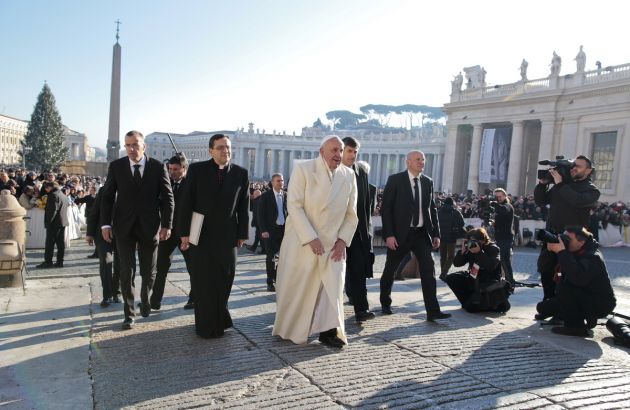Pope Francis drawing crowds four times larger than predecessor

VATICAN CITY (Reuters) - More than two million people have flocked to Pope Francis' general audiences in St. Peter's Square since his election in March, four times the number that Pope Benedict drew in all of 2012.
The Vatican said on Wednesday it had issued 1,548,500 tickets for the 30 Wednesday general audiences Francis has held since his election on March 13 as the first non-European pope in 1,300 years.
But it said the actual number was "much larger" because no tickets are needed for the rear section of the square and surrounding streets, which accommodate overflow. That area, which fits at least 20,000, is regularly filled during Francis' audiences.
The Vatican did not issue comparative figures on Wednesday but figures released on Jan. 4 showed that 447,000 tickets were issued for the 43 general audiences held by former Pope Benedict in all of 2012.
The Pope, who last week was named Time Magazine's Person of the Year, has drawn people to the Vatican because of his outgoing, simple and friendly style. Benedict was more reserved and far less spontaneous.
Francis has forsaken many of the trappings used by his predecessors.
He has given up the spacious papal apartments in the Apostolic Palace for a small apartment in a guest house and is driven in a regular car instead of the papal limousine.
Francis has also proven to be hugely popular because of his statements urging the Church to be closer to the poor and to be more merciful and less condemning.
The crowds at Francis' general audiences have often topped 100,000, forcing police to close off the main boulevard leading to the Vatican to accommodate more people.
The Vatican newspaper said Francis telephoned Benedict to exchange Christmas greetings. Benedict is living in a former convent on the Vatican grounds and has the title Pope Emeritus.
Tickets to audiences and all other papal events are issued for free by the Vatican's Prefecture of the Pontifical Household and usually distributed through parishes and Church institutions.
(Editing by Sonya Hepinstall)